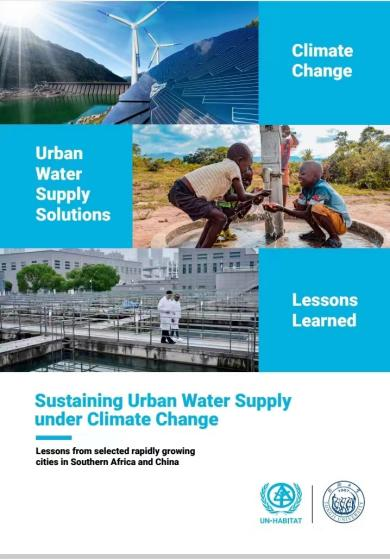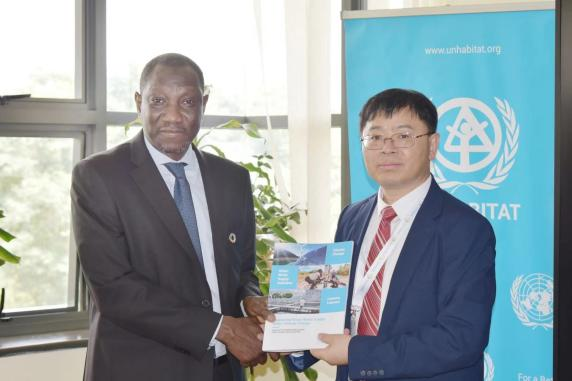On February 27, the sixth United Nations Environment Assembly was held in Nairobi, Kenya’s capital. UN-Habitat and Tongji University jointly released a report titled ‘Sustaining Urban Water Supply under Climate Change’: Lessons from selected rapidly growing cities in Southern Africa and China. The report aims to provide valuable insights for developing countries’ urban and regional areas involved in water supply and source protection, promoting progress towards sustainable development goals, and the new urban agenda.

This joint report presents experiential data on the impact of climate change and rapid urbanization on the water supply in four landlocked cities in semi-arid Southern Africa - Bulawayo in Zimbabwe, Gaborone in Botswana, Lusaka in Zambia, and Windhoek in Namibia. The data were compared to a case study conducted in Shanghai, China. The report emphasizes the indispensability of upgraded water demand management, diversified water sources, technological innovation, and knowledge sharing. It also calls for partnerships between countries and the rapidly developing economies.
The release event was attended by representatives from UN-Habitat; the governments of Botswana, Namibia, Zambia, and Zimbabwe; and representatives from Tongji University.
The foreword of the report was co-authored by the Deputy Secretary-General of the United Nations and Executive Director of UN-Habitat, Maimunah Sharif, academician XU Zuxin, professor at Tongji University, and member of the Chinese Academy of Engineering. They underscored the foundational importance of water to life and the global challenge of meeting water supply needs, particularly in developing countries. The report aligns with the 2030 Sustainable Development Agenda and the New Urban Agenda, reaffirming the commitment of world leaders to seek sustainable water supply and management solutions. Enhancing water efficiency, advocating sustainable water practices, recycling, and reuse are urgent global priorities.
During the event, LYU Peiming, the Executive Vice President of Tongji University, highlighted the growing pressure on urban populations in the coming decades. Cities, while simultaneously becoming driving forces for economic development, face constraints on safe drinking water at the same time. He expressed Tongji’s commitment to assisting global development and sharing, further expanding existing collaborations with the UN-Habitat.
Mutinta Munyati, a human settlement officer at the UN-Habitat Regional Office for Africa, emphasized that climate change poses a threat to the resilience of African cities. The joint report validates the effectiveness of a series of measures that help or potentially help these cities cope with water-supply crises. It aims to assist city managers, residents, and water supply companies in understanding relevant strategies and methods, promoting the effective dissemination of best practices, and providing references for policymaking.
Professor LI Fengting, a professor of Tongji and an academician at the African Academy of Sciences, expressed the university’s willingness to share experiences in water resource protection, management, and water treatment in African countries. With the support of the Chinese government, Tongji is ready to promote cooperation with African countries in capacity building, degree education, and technology transfer and sharing under the UN’s framework of south–south cooperation.
Oumar Sylla, Director of the UN-Habitat Regional Office for Africa, highlighted the challenge of rapid urbanization in Africa, which tests the capacity of cities to meet water resource demands. He pointed out that water supply planning, digital management, and efficient policy implementation in China are valuable experiences that African cities can learn from.
This research, led by Professor LI Fengting, received support from the UN-Habitat, the UN Environment Programme, the Ministry of Science and Technology of the People’s Republic of China, the China Association for Science and Technology, the Ministry of Ecology and Environment of the People’s Republic of China, the China Meteorological Administration, and the Science and Technology Commission of Shanghai Municipality.
